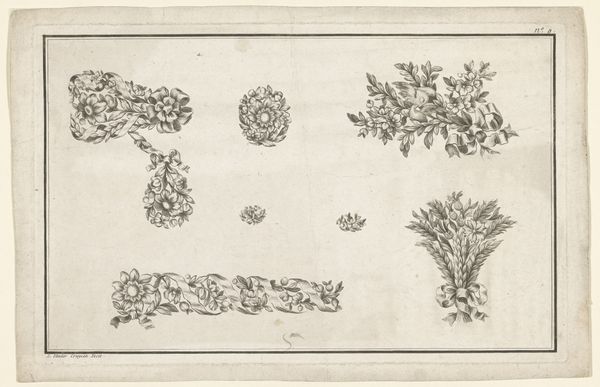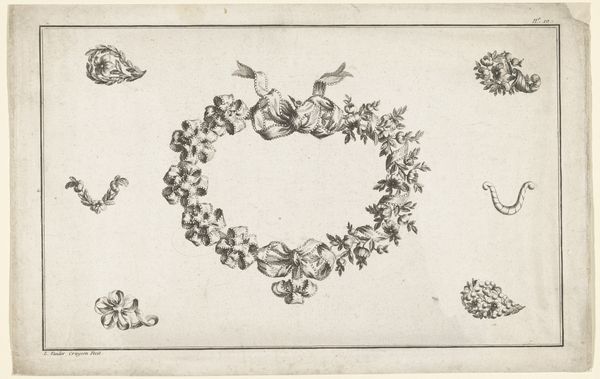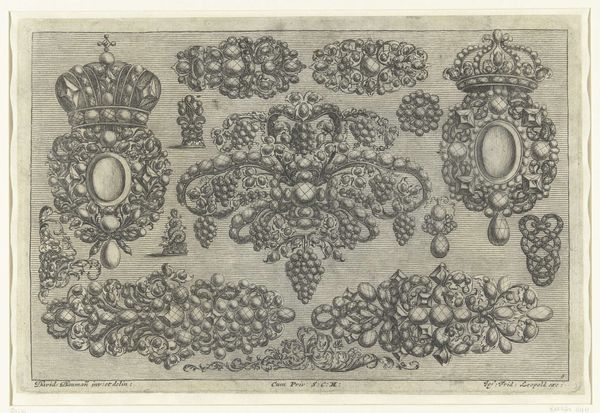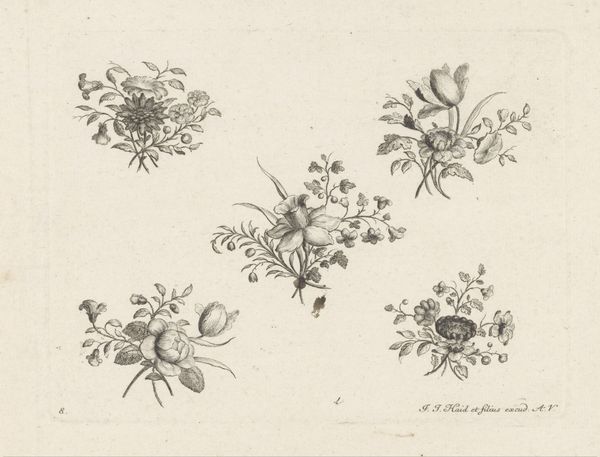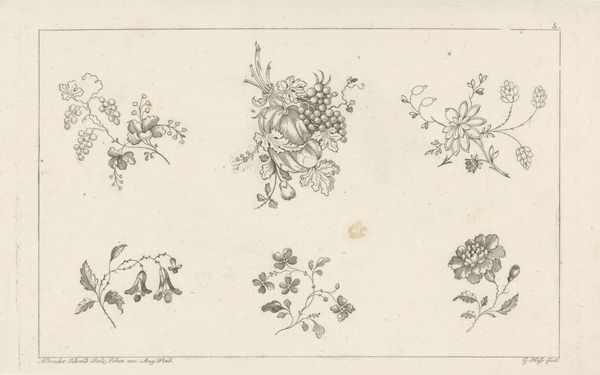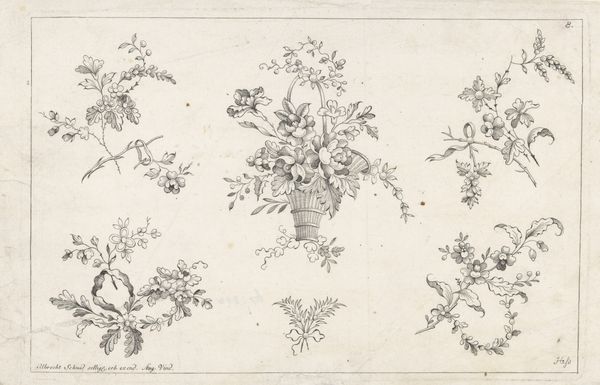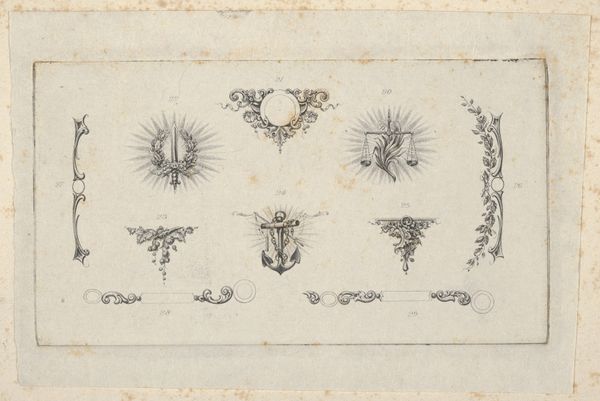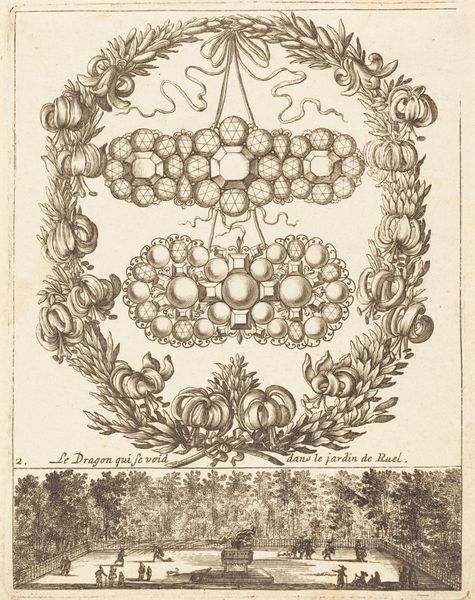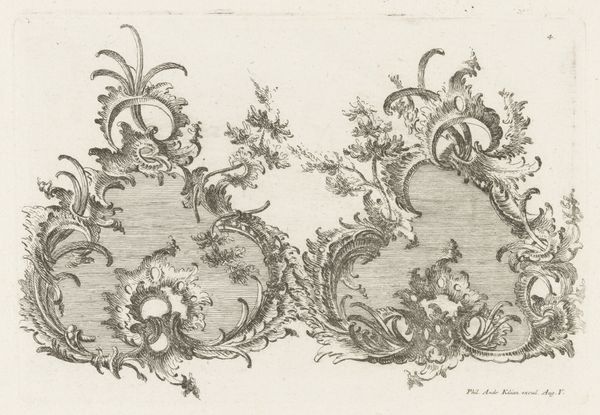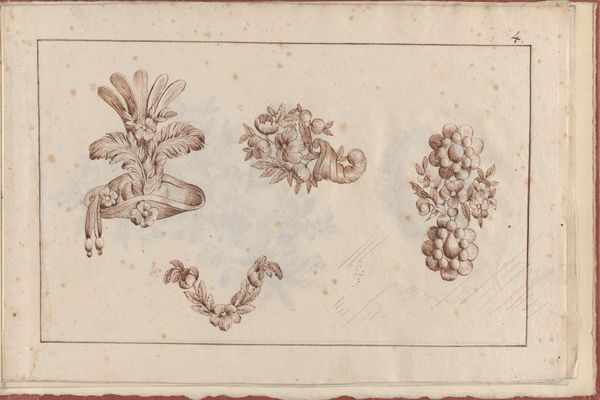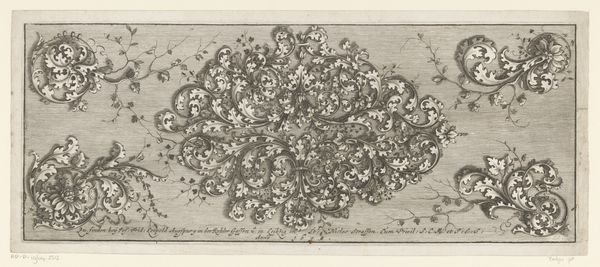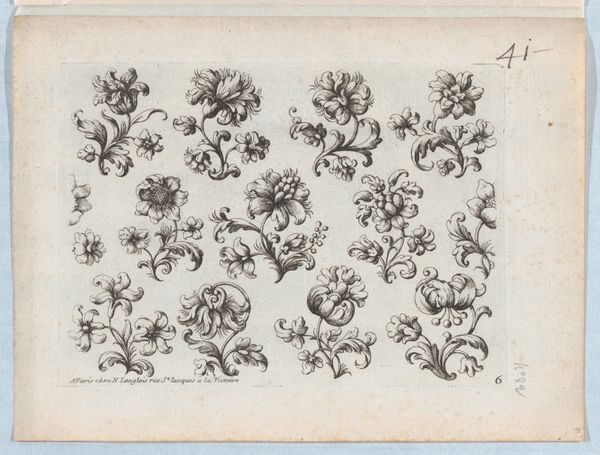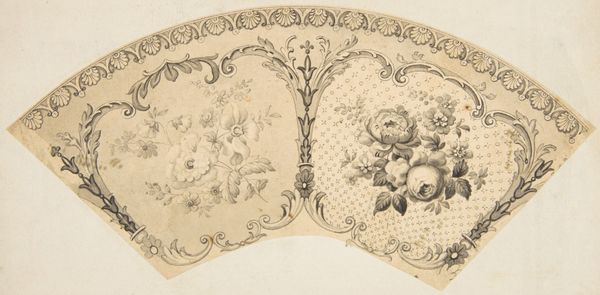
Dimensions: height 238 mm, width 362 mm
Copyright: Rijks Museum: Open Domain
Curator: Looking at this fascinating engraving from 1770, titled "Vier juwelen," by L. van der Cruycen, my first impression is of understated elegance. Editor: Oh, my goodness, yes. They seem more like sketches of dreams, you know? Ethereal almost, even though they’re renderings of physical objects. Like little ghosts of jewelry, winking from another era. Curator: Exactly! What draws me is the process by which these were made. The use of ink, paper, and engraving techniques allows for incredible detail, highlighting the labour invested in depicting these precious objects. One can really consider it as an item intended for artisan training in fine metalwork, or as a decorative guide for affluent patrons interested in fashionable ornamentation. Editor: That’s wonderfully clinical. But I can also just imagine some craftsman using this very piece, right here, getting utterly frustrated with that ribbon in the upper left ornament! Trying to bend metal just so, sighing theatrically, "Cruycen, you’ve outdone yourself this time!" Do you think they swore as much back then? Curator: Undoubtedly, frustration knows no time period. What is interesting, looking closer at the materiality, is that its medium, a print, would allow wide circulation, enabling aspiring craftspeople in several places to utilize its illustrations to further improve design skills. It truly bridges the gap between function and representation. Editor: Bridging, yes, it really leaps! Because it seems so distant yet the precision and elegance of line – you can feel someone's breath as they sketched. Did the Baroque era jewelry of the affluent, you suppose, ever come close to looking as delightful? The originals must’ve weighed a tonne. Curator: Scale and weight versus aesthetic lightness, quite the juxtaposition, yes. I am intrigued by the composition, too, by what those blank spaces around each ornament tell us of consumer habits, of class, and even perhaps waste in a historical economic setting, don't you think? Editor: Ah, material context! Now you've really tugged me back in. Wonderful, thank you for providing all this perspective. It seems such a tiny peek but there is really so much that it reveals to us when we dig in together, isn't there? Curator: Yes, absolutely. Thank you, that was great.
Comments
No comments
Be the first to comment and join the conversation on the ultimate creative platform.
